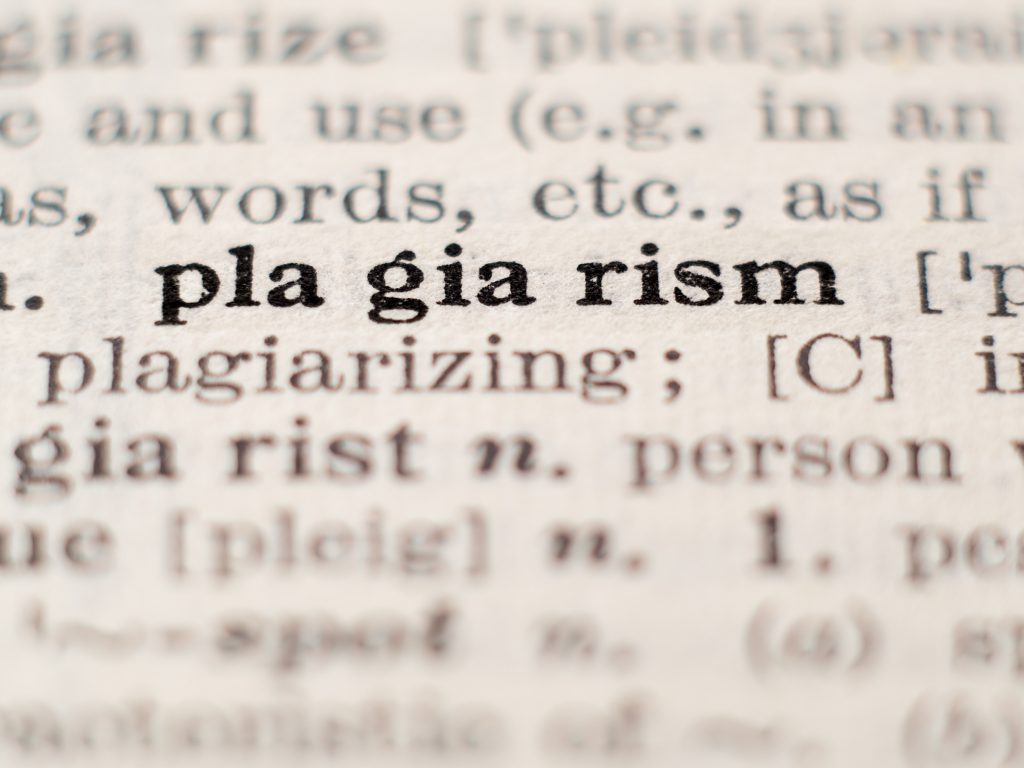
Being a professional writer, avoiding plagiarism has become second nature. From double-checking citations to ensuring my words are my own, creating original content and kicking plagiarism to the curb are all part of the job!
What is plagiarism, anyway? According to Merriam-Webster, plagiarism is “to steal and pass off (the ideas or words of another) as one’s own.” This can be done intentionally or unintentionally in print or online, whether you’re working on a publication or a simple homework assignment. You can even plagiarize your own work! (More on that later.)
Committing plagiarism has never been easier than it is now, too. With a wealth of information available online—and AI-powered writing tools like ChatGPT—all it takes is a couple of clicks. Read on to learn more about the types of plagiarism and how to avoid plagiarism!
Types of Plagiarism
When I think of plagiarism, I head back to high school. My teachers made it crystal clear that plagiarism was unacceptable and came with serious consequences. Once I made it to college, plagiarism wasn’t only wrong—it could get you kicked out of school!
You might think of plagiarism as simply copying another person’s work, pasting it into a word processor, then turning it in as your own. While that is plagiarism, there are other types of plagiarism as well:
Complete Plagiarism
Complete plagiarism is 100% plagiarism. In a piece of complete plagiarism, none of the work is original and does not belong to the author.
Here are some examples of complete plagiarism:
- Replicating content word for word
- Submitting old essays written by friends or siblings
- Asking someone to complete assignments for you
- Buying academic papers from ghostwriters
Direct Plagiarism
Similar to complete plagiarism, direct plagiarism occurs when significant portions of a piece are copied—verbatim—without citation to the original author. There are no quotation marks, footnotes, or other indications that reveal the content is not original.
When compared to complete plagiarism, the difference with direct plagiarism is how much of the work is plagiarized. With complete plagiarism, none of the work is original. With direct plagiarism, some of the work is original.
Paraphrasing Plagiarism
Paraphrasing plagiarism is among the most common types of plagiarism. Paraphrasing plagiarism is taking parts of another person’s work, but switching up a few words or phrases.
Plagiarism applies to words and ideas. While the words may not be identical in paraphrasing plagiarism, the original idea remains the same—and that’s what’s being stolen.
Source-Based Plagiarism
Source-based plagiarism can be complicated because it is often unintentional. Simply citing a source incorrectly is considered source-based plagiarism!
Here are a few other examples of source-based plagiarism:
- Framing the information in a misleading way
- Citing a primary source found in a secondary source without citing the secondary source
- Fabricating data or sources
- Omitting important data
Mosaic or Patchwork Plagiarism
Some types of plagiarism are more challenging to catch than others. Mosaic or patchwork plagiarism is often overlooked because of how craftily it can be implemented.
Often combined with direct plagiarism, mosaic or patchwork plagiarism involves mixing plagiarized pieces with your own work. Less blatant than direct plagiarism, mosaic or patchwork plagiarism can include blending an exact line from a source with a paragraph you’ve written yourself.
Self-Plagiarism
Yes, you can actually plagiarize your own work. Surprise!
How? Self-plagiarism can be committed when you recycle your old pieces. If your college professor is asking for a research paper about the American Revolution and you submit a paper you wrote on the same topic in high school, that’s self-plagiarism!
Self-plagiarism is primarily a concern for professionals, particularly for writers. If you’re creating identical content for every client, that can stir up some serious trouble. In academic settings, reusing the same papers for multiple classes can lead to academic probation—even expulsion!
How to Avoid Plagiarism
Now that you’re well-versed on the various types of plagiarism, let’s nail down how to avoid plagiarism:
Lead with Creativity
Remember, plagiarism isn’t just about stealing others’ words—it’s about stealing others’ ideas, too. Before you even begin digging into your project, brainstorm how you’d like to approach it.
What fresh, new perspective on the topic can you bring to the table? What angle can you take that hasn’t been taken before? The more original your own ideas are, the less you have to worry about plagiarism.
Cite Your Sources Correctly
A good rule of thumb is when in doubt, cite the source. Even if some of the information you include in your work seems like common knowledge, it’s better to be safe than sorry!
But just citing your sources isn’t enough. You must cite your sources correctly. This will depend on the style guide you use, so be sure to refer to the right one as you work on your project.
Use a Plagiarism Checker
After you’ve completed your work, run it through an online plagiarism checker. An online plagiarism checker will scan and compare your work to existing content online. This kind of tool can alert you to any plagiarized parts in your piece, as well as bring potential concerning content to your attention.
A plagiarism checker is an excellent final step to take before submitting your work.
Keep it original, out there!
Want to learn more about using technology responsibly in today’s tech-dominated world? Troomi Wireless provides a wealth of information to equip you and your family with the scoop on all things technology. Click here for our full blog!
